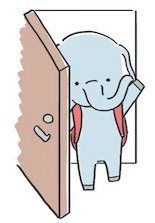Blog Thread
- Japanese Online Newsletter Vol. 143 敬称(けいしょう)


英語では相手の名前を呼ぶ時、”Hi Bob” や “Hello Suzan” とファーストネームを呼び捨てにします。また、敬意を払いたい場合には “Mr. Ms. Mrs.” や “Dr.” のような敬称をつける場合があります。日本でも様々な呼び方がありますので、まとめてみました。
一般的な場合
「田中さん」と言うように「さん」をつけて呼びます。一般的に姓(Family Name)に「さん」をつける場合が多いですが、「田中 太郎さん」とフルネームに「さん」をつけたり、親しい場合は「太郎さん」と名前に「さん」をつけて呼ぶこともできます。
お客様や目上の人の場合
「木村様」と言うように「様」をつけて呼びます。一般的には姓に「様」をつける場合が多いのですが、「木村 恵子様」とフルネームに「様」をつけたりもします。「恵子様」のように名前に「様」をつけることはあまりしません。
「殿 (Dono)」は、時代劇などで身分が上の人を表す言葉ですが、現在ではあまり使われない敬称です。
年下、子供の場合
男の子なら「くん」、女の子なら「ちゃん」を名前の後につけて呼びます。男の子でも「ちゃん」をつけて呼ぶことはありますが、女の子に「くん」はつけません。また、「くん」は姓の後にもつけられますが、「ちゃん」は姓ではなく、名(Given Name)につけます。「くん」や「ちゃん」は可愛いペットを呼ぶ場合にも使われます。
職業で使われる
医者、弁護士、政治、教育者に対しては、名前の後に「先生」をつけます。これは敬意を表す表現です。姓やフルネームに「先生」をつけることはありますが、名だけを呼ぶ場合「先生」は使われません。日本では姓をつけない呼び方は、無礼だと考えられています。ですから、無礼な呼び方に敬称である「先生」を使うことはあまり考えられません。
ちょっと変わった呼び方
「たん」という言葉をつけることがあります。これは特に可愛いものを呼ぶ場合、最近では「萌 (もえ) キャラクター」に対して使うようです。基本的に相手に対して使うものではなく、「あの映画のXXXたん可愛かった。」といったような使い方になります。
他にも、「ち」をつける場合もあります。「ち」は実際には「~~っち」と書きます。これは「ちゃん」よりも親しい呼び方だと考えてください。「ち」には、同じような発音で「~~んち」という言い方があります。例えば、「佐藤んち」とは「佐藤の家」という意味で、佐藤家という家族を意味しています。
「先輩 (Senpai)」は、自分よりも長く勤めている人、部活などでの上級生を呼ぶ場合に使います。「先輩」だけで使う場合もありますが、姓に「先輩」をつけて呼びこともあります。
以上が日本の名前の呼び方です。これら以外にも「どん」と言った呼び方などもありますが、本日は一般的な敬称をご紹介させていただきました。
Honorific Titles
In English, we address people by their first names, such as “Hi Bob” or “Hello Suzan. If you want to show respect, you may add honorific titles like “Mr., Ms., Mrs.” or “Dr.”. However, in Japanese, there are different ways to address people.
In general
People add “san” to the end of names, as in “Tanaka-san”. Generally, you add “san” to the family name, but it’s also possible to add it to your full name, like in “Tanaka Taro-san”. If you’re close to the person you’re addressing, you can also add “san” to their first name, as in “Taro-san”.
For Customers or Superiors
When addressing customers or superiors, you add “sama” at the end, as in “Kimura-sama”. Generally, you add “sama” to the family name, but sometimes it’s added to the full name, as in “Kimura Keiko-sama”. However, it’s not so common to add “sama” to a first name, as in “Keiko-sama”.
In historical dramas, they refer to a person of higher status as “dono”. However, it’s not used as an honorific title today.
For Younger People and Children
For boys, we address them with “kun”, while we adress girls with “chan” after their names. We can also address boys as “chan”, but we don’t use “kun” for girls. You can add “kun” after the family name, but we add “chan” to the first name, not the family name. We also use “kun” and “chan” to call cute pets.
For Professions
To address doctors, lawyers, politicians, and educators, we add “sensei” after their names, as it’s an expression of respect. When using “sensei”, we added it to a person’s last name or full name, but not when calling their first name only. It’s considered impolite to address someone without their family name. Therefore, we consider addressing someone with “sensei” while only using their first name rude.
A Slightly Different Way
Sometimes, we use the word “tan”. We use this when calling something cute, like a “Moe character”. Usually, we use “tan” when referring to a character from a movie or anime. For example, “XXX-tan from that movie was so cute”.
In other cases, we may add “chi”, which is written as “〜〜tchi”. It’s a more familiar way to address someone, rather than “chan”. “chi” has a similar pronunciation as “〜〜nchi”, but it doesn’t have the same meaning. For example, “Sato-nchi” means Sato’s house, referring to the Sato family.
We use the word “senpai” to call someone who’s been working for longer than you or a senior student in a club, for example. You can use the word, “senpai” on its own, as well as with the family name.
This is how the Japanese call people using honorific titles. In addition to these, there are other ways to address people, such as “don”, but these are just the more common honorific titles.

sign up for the Japanese-Online Newsletter
__..-・**・-..__..-・**・-.._ あいうえお かきくけこ さしすせそ たちつてと なにぬねの はひふへほ まみむめも やいゆえよ らりるれろ わゐうゑを ん __..-・**・-..__..-・**・-.._
#JapaneseOnline #LearningJapanese #FreeJapaneseLessons #JapaneseVideoLearning #JapaneseAnime #Anime #JapaneseFood #Bloguru
- If you are a bloguru member, please login.
Login
- If you are not a bloguru member, you may request a free account here:
Request Account